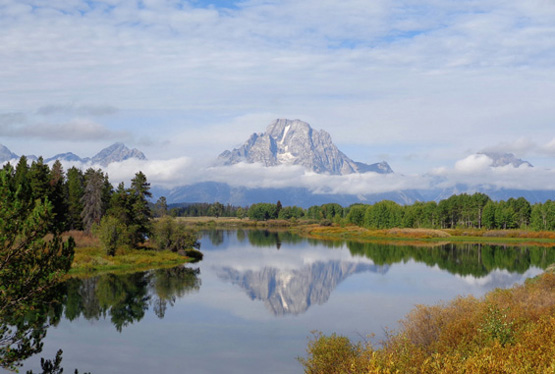Over 200 years ago George Washington's vision of the U.S. capital city
included a botanic garden. Congress approved the idea in 1820.The
U.S. Botanic Garden is recognized as a museum. It includes a large
glassed-in conservatory and two lovely outdoor gardens, the National
Garden and Bartholdi Park.
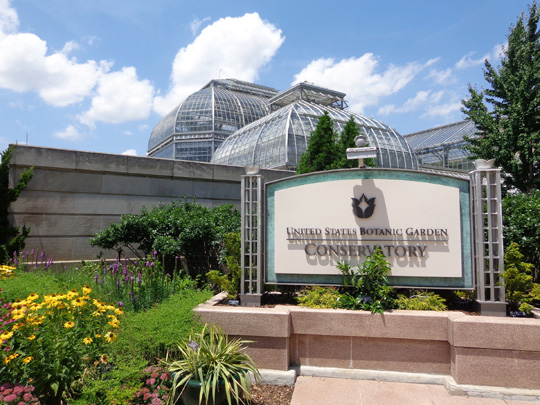
Like so many other museums in Washington, D.C., admission is free to
the Conservatory.
This diagram from the website shows the
layout and location of the Conservatory and parks just southwest of
the Capitol Building grounds:
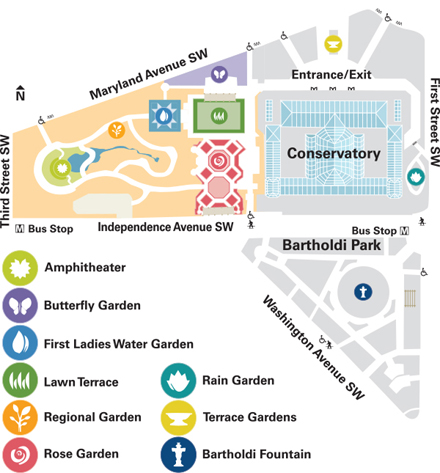
The Conservatory and National Garden, which is gated, usually open at 10 AM.
The day we wanted to go into the Conservatory we arrived a little too early but the
National Garden just happened to be open. We were glad we could wander
through it while waiting to get into the building.
Here are some photos I took of the National Garden, Bartholdi Park,
and the outside of the Conservatory on two different days we were
in the area:
BARTHOLDI PARK
This two-acre park with gardens and fountain were created in 1932
when the Conservatory was moved to its current location.
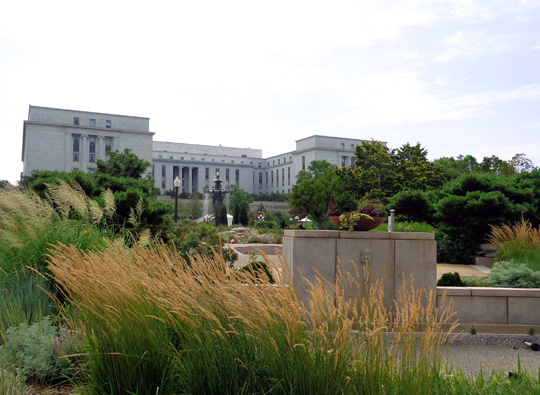
The Cannon House (of
Representatives) office building is in the background.

Per the
website, this park is more than a nice
place to unwind in a busy city.
It also serves as a demonstration garden where visitors can learn to
apply the latest horticultural techniques to their own yards. The plants
are constantly updated to showcase new varieties and design trends.
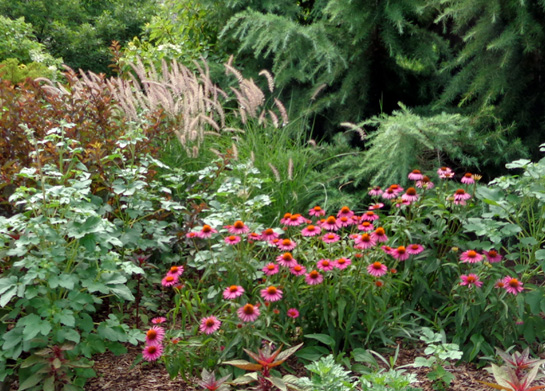
THE NATIONAL GARDEN
This gated three-acre
garden on the west side of the Conservatory is relatively new;
it was opened to the public in 2006 and serves several educational
as well as aesthetic functions.
The major features showcase various aspects of gardening in the
Mid-Atlantic region of the country, including a butterfly garden, rose
garden, and water garden. There is a lawn at one end of the garden and
an amphitheater at the other end for small gatherings.
We enjoyed a morning walk through the gardens before it got really
hot that day:
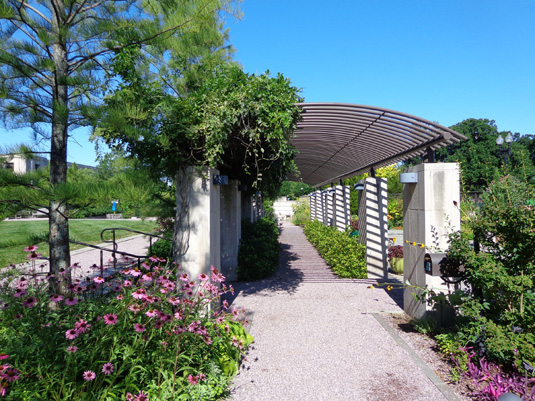
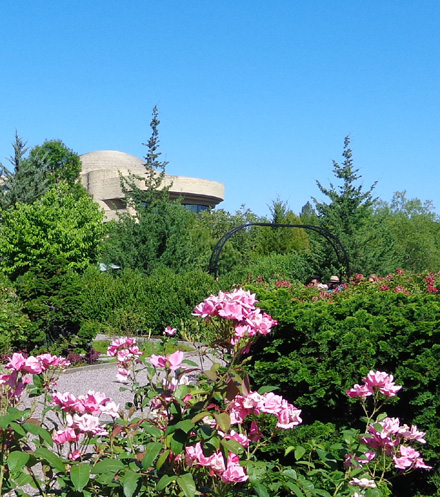
The American Indian Museum is
partially visible from the rose garden.
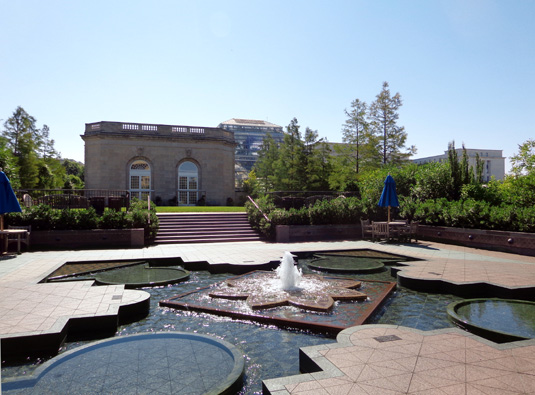
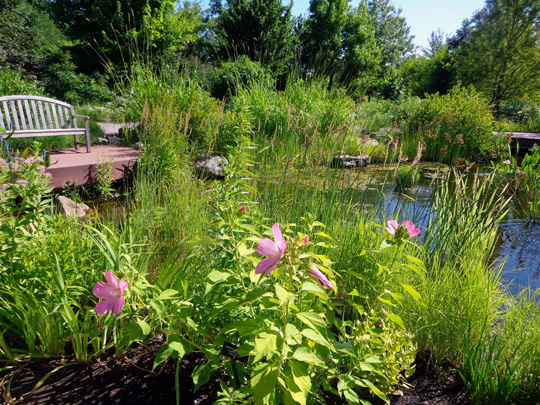
My favorite place in the National Garden
What a soothing place to sit, just a block from busy Capitol Hill.
THE CONSERVATORY
This very large multi-roomed greenhouse, constructed in 1933 and renovated
from 1997 to 2001, contains two courtyard gardens and ten garden rooms under glass.
This diagram showing the layout of these rooms is from the
website:
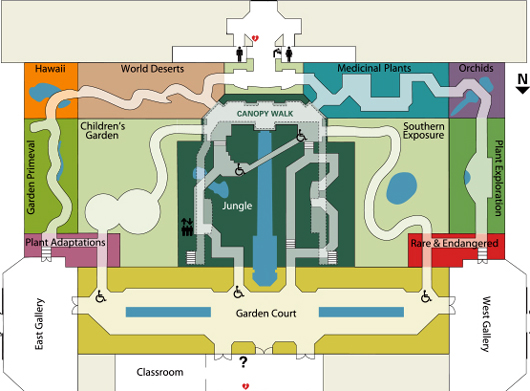
We entered the main door on Maryland Avenue into the Garden Court, which has two
long, shallow pools of water framed by lush flowers and other plants.
Trellises and colorful arched
murals depicting farms, vineyards, and gardens line the front walls:

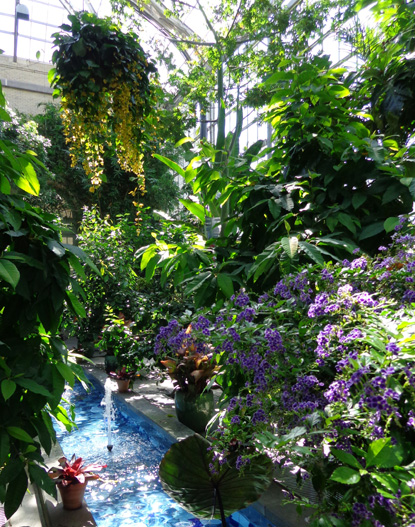
The largest greenhouse, the "Jungle," occupies the center of the Conservatory.
It is a lush tropical paradise with a dome rising 93 feet from the floor. It is full
of ferns, palm trees of every kind imaginable, numerous orchids, and other exotic
plants to transport visitors to another world.
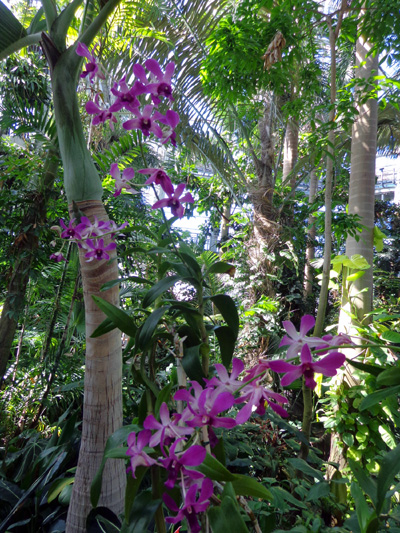
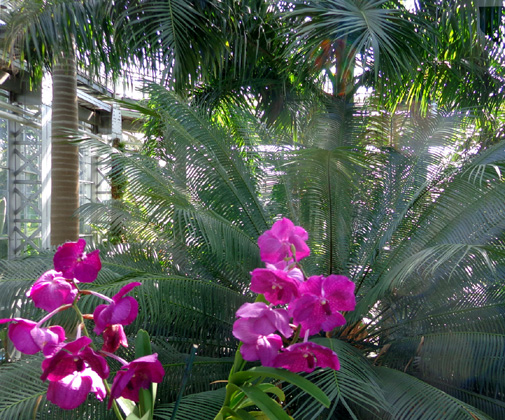
It's cool -- rather warm, actually -- to climb the metal stairs and walk
around the perimeter of the Jungle at the mezzanine level high in the jungle canopy:
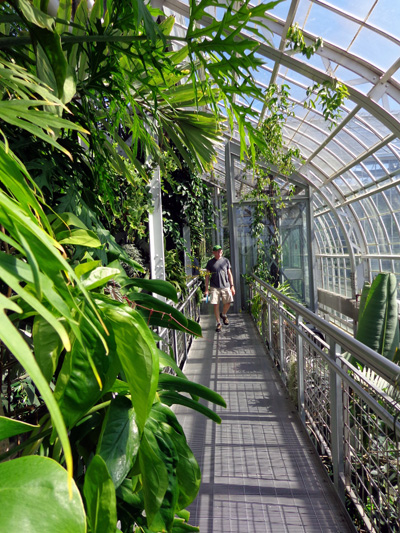
Jim on the catwalk at the top of the jungle
dome
The environment inside this and the other greenhouses is controlled automatically
-- misting, sun and shade, air circulation, heating, cooling --
the keep the plants fresh and healthy.
Other greenhouses are smaller and contain a variety of plant collections:
- Plant adaptations
- Primeval plants
- Orchids
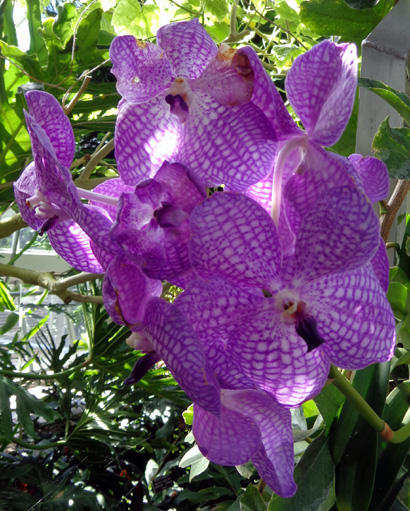
- World deserts
- Native Hawaiian plants
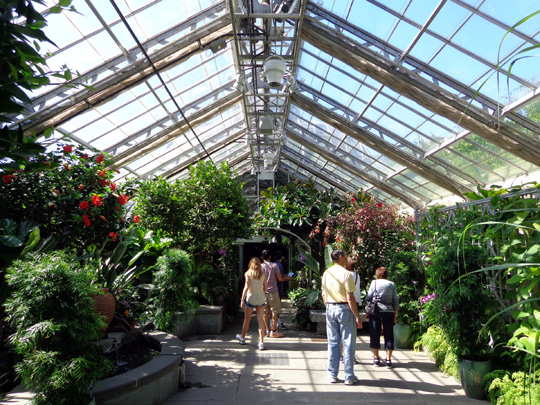
- Rare and endangered species
- Plants discovered in the wild
- Medicinal plants
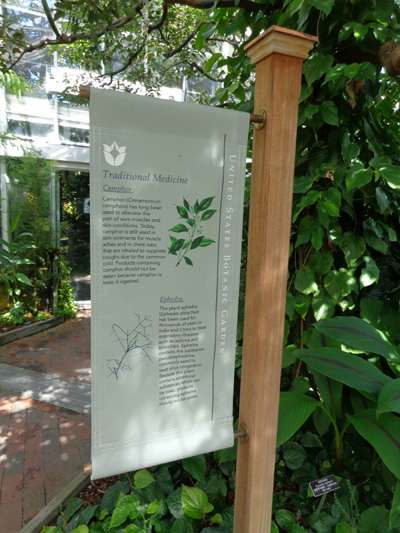
Inside the front of the Conservatory are also a classroom and two
galleries with changing exhibits.
In addition there are two outdoor courtyards featuring a children's
garden and a garden for plants from the Southeast U.S., Southwest U.S.,
and Mexico.
EXTERIOR SHOTS
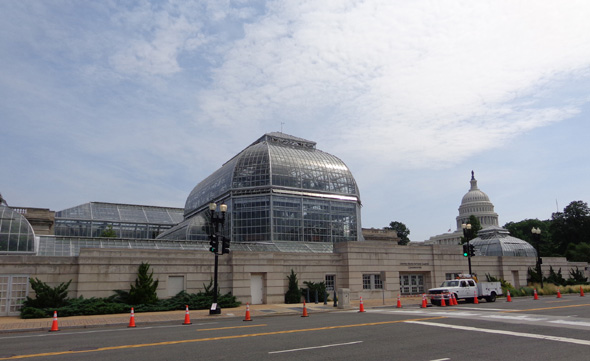
View of south side of the Conservatory from
Bertholdi Park (Independence Ave.)
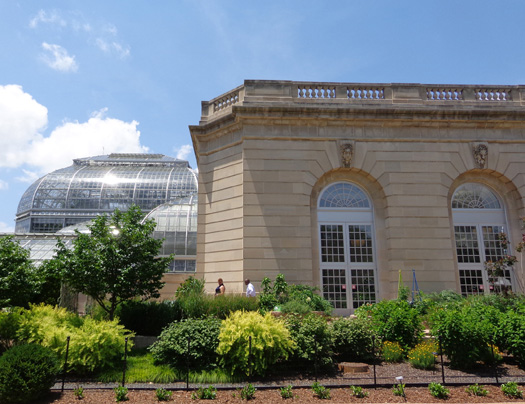
Part of the north side of the building; the
main entrance is to the right.
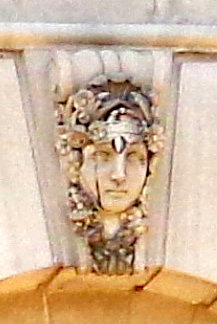
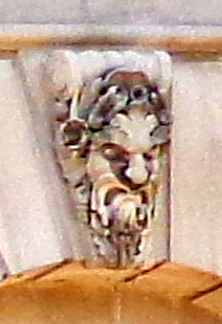
Close-up of two of the gargoyles above the
arched windows
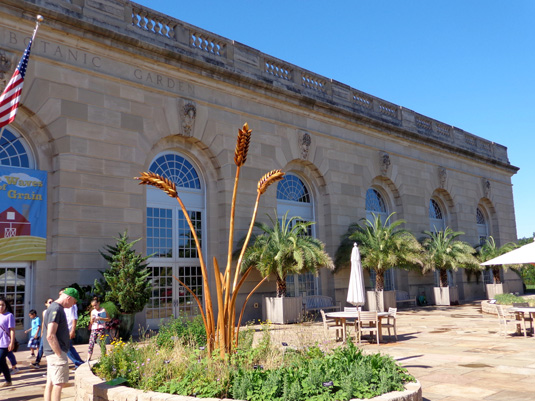
Jim reads the interpretive plaque for the
metal wheat sculpture near the Conservatory entrance.
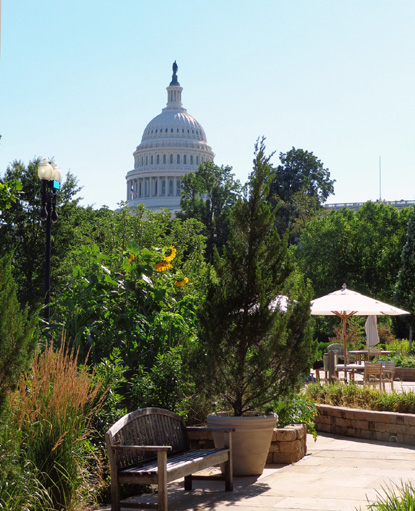
The Capitol Dome is visible from the front
terrace of the Conservatory.
PUT THIS ON YOUR D.C. "TO DO" LIST
Even if you don't have a yard or aren't concerned about conservation, sustainability, innovative
gardening techniques, or other educational aspects of the U.S. Botanic Gardens . . .
I still recommend visiting this urban oasis to simply enjoy the beautiful landscapes, gorgeous
flowers, and large variety of other plants. Remember, it's all free.
And even if you've been there in one season, go in another -- the outdoor plants
obviously change throughout the year and the indoor ones are updated continually.
Next entry: a tour of George Washington's Mount Vernon
estate -- the house, outbuildings, grounds,
tomb of Washington, distillery, grist mill -- and scenes from the
multi-use path along the Potomac River from
Alexandria to Mt. Vernon
Happy trails,
Sue
"Runtrails & Company" - Sue Norwood, Jim O'Neil,
Cody the ultra Lab, and Casey-pup
Previous
Next
© 2014 Sue Norwood and Jim O'Neil
